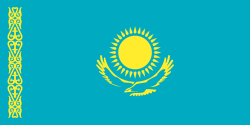An editor has nominated this article for deletion. You are welcome to participate in the deletion discussion , which will decide whether to keep it. |
Below is the list of Kazakhstan-related articles.
Contents
- General
- Geography
- Mountains
- Lakes
- Rivers
- Islands
- Other land features
- History
- Politics, government, and law
- Politicians
- Administrative divisions
- Demographics
- Science and technology
- Religion
- Economy
- Culture
- Sports
- Others

